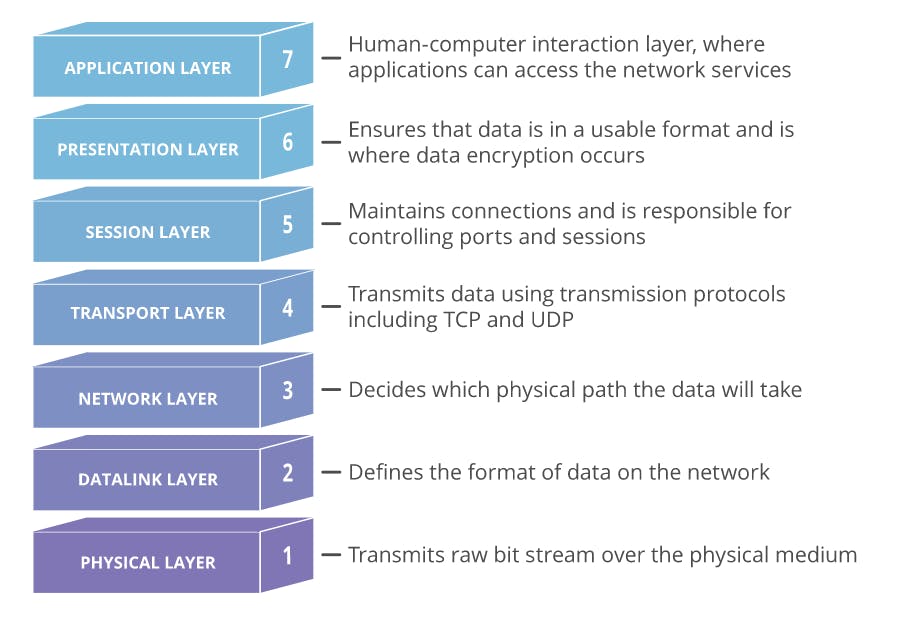What is the OSI Model?
The OSI model (or Open Systems Interconnection Model) is a conceptual model created by ISO (International Organization for Standardization) which allows many different types of systems to communicate together. The OSI model consists of seven different layers that each have its own unique purpose and responsibilities.
7 Application
The application is the only layer that directly communicates with the user. You can think of the application layer as the Graphical User Interface (GUI) of the OSI model. The application layer includes protocols such as HTTP or SMTP (Simple Mail Transfer Protocol).
6 Presentation
This presentation layer is responsible for prepping and standardization for the application layer. in plain English, it is a translater for the application. If two devices are communicating using different encoding methods, layer 6 will be responsible for translating it. This layer can also handle encryption and compression.
5 Session
The session layer is responsible for opening and closing a stable communication between two devices. This layer can also be responsible for synchronizing with checkpoints. For example, if you were downloading a 200MB video and it has a checkpoint every 5MB, and it fails at 143MB due to a server disconnect. You could resume that video at 140MB. Something worth noting is that every session is unique, which means that data cannot travel over different sessions.
4 Transport
The transport layer is a vital part of the transmission of data across a network. This includes taking the data from the session layer and breaking it up into chunks before sending it to layer 3. This transport layer is also responsible for reassembling all the chunks into complete data for the session layer to use. This is mainly done using two protocols UDP and TCP.
TCP
The Transmission Control Protocol (TCP) is a protocol designed for reliability.
- A connection-oriented protocol (requires an established connection to transmit data).
- Extensive error checking and acknowledgment of data.
- is very reliable
- Used in HTTPS, HTTP, SMTP, etc
UDP
The User Datagram Protocol (UDP) is a simpler protocol designed with speed in mind.
- Connectionless Internet protocol
- Very basic error checking
- Is very fast
- Mainly used in streaming video
3 Network
The Network layer is used to route packets threw two different networks. Everything is communicated threw IP addresses in this layer. The network layer tries to find the optimal "path", also called routing, using protocols such as OSPF (Open Shortest Path First) and RIP (Routing Information Protocol).
2 Data Link
The Data link layer is similar to the network layer but the data link facilitates data transfers between two devices on the same network. They transfer data using a MAC Address in this layer.
1 The Physical Layer
This is the easiest layer to understand. To put it simply, this is the physical hardware that deals with data transfers, such as cables and switches. Both sides of the physical layer must agree on a convention to tell apart the 1s and 0s.
Sources
These are some great sources if you want to work more:


